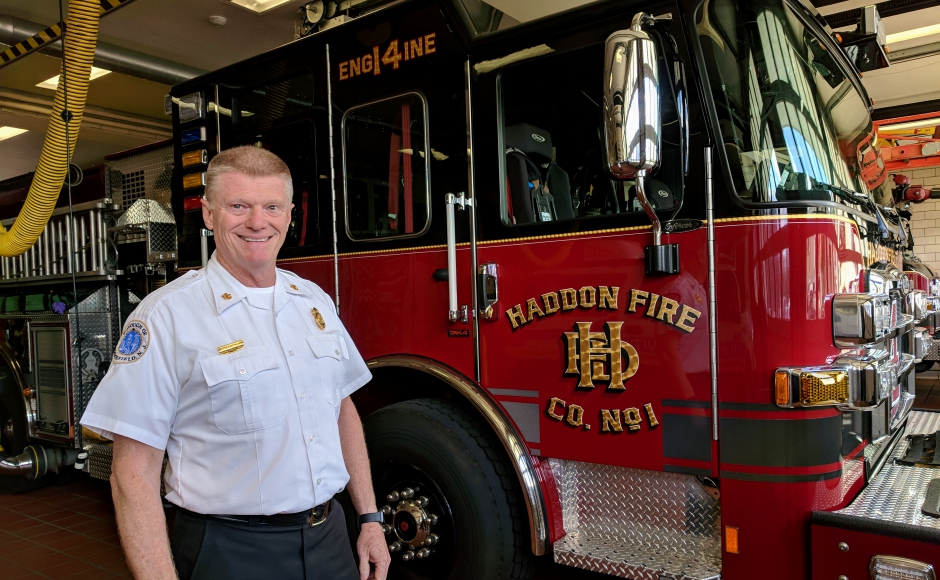 Haddonfield Fire Chief Sam Trotman. Credit: Matt Skoufalos.
Haddonfield Fire Chief Sam Trotman. Credit: Matt Skoufalos. Haddonfield Fire Chief Sam Trotman. Credit: Matt Skoufalos.
Haddonfield Fire Chief Sam Trotman. Credit: Matt Skoufalos.Related posts

ICE: Four Detained in Collingswood FBI Raid
Four men were detained after FBI agents executed a criminal warrant at a home in Collingswood Tuesday. ICE has since charged them with being 'illegally present' in the United States. There's no word from FBI about what that might mean for the criminal case. Sign in or subscribe to continue reading...
July 23, 2025
Multiple Arrests in Collingswood FBI Raid, Agency Refers Comment to ICE
Federal agents detained at least three people Tuesday in an enforcement action that Collingswood Police say was related to criminal fraud. An FBI spokesperson referred the matter to ICE, which has not responded to requests for comment. This is a developing story. Sign in or subscribe to continue reading…
July 22, 2025